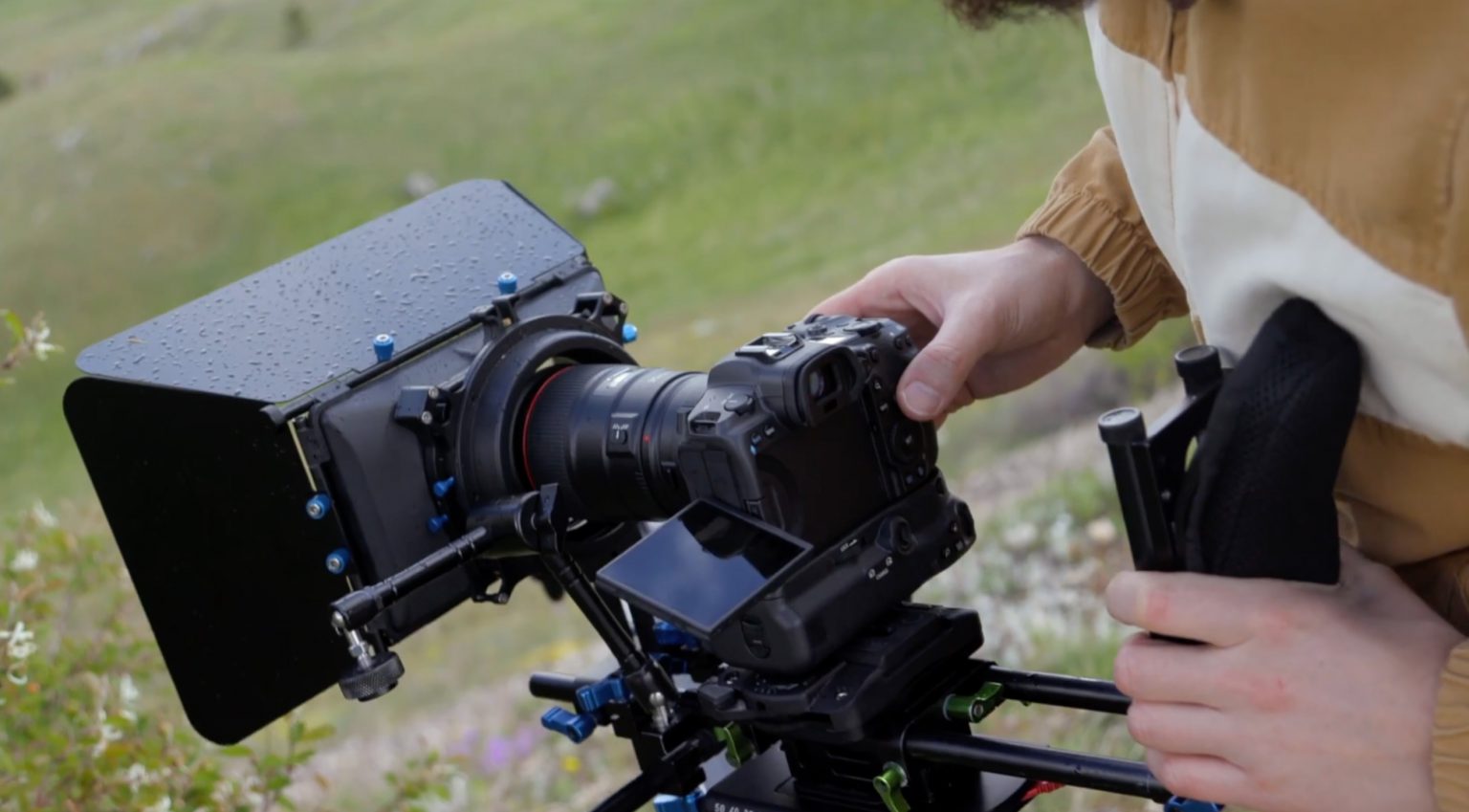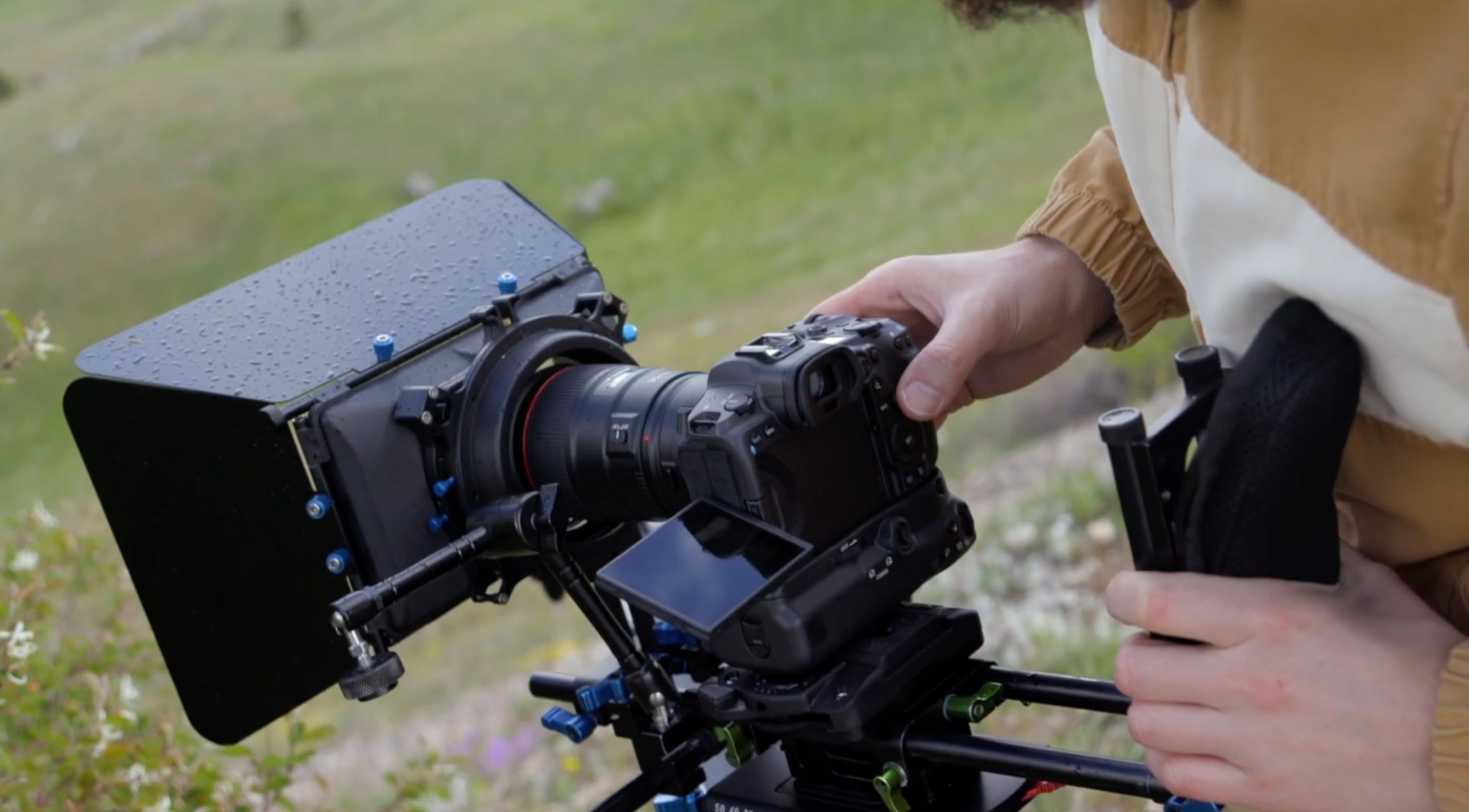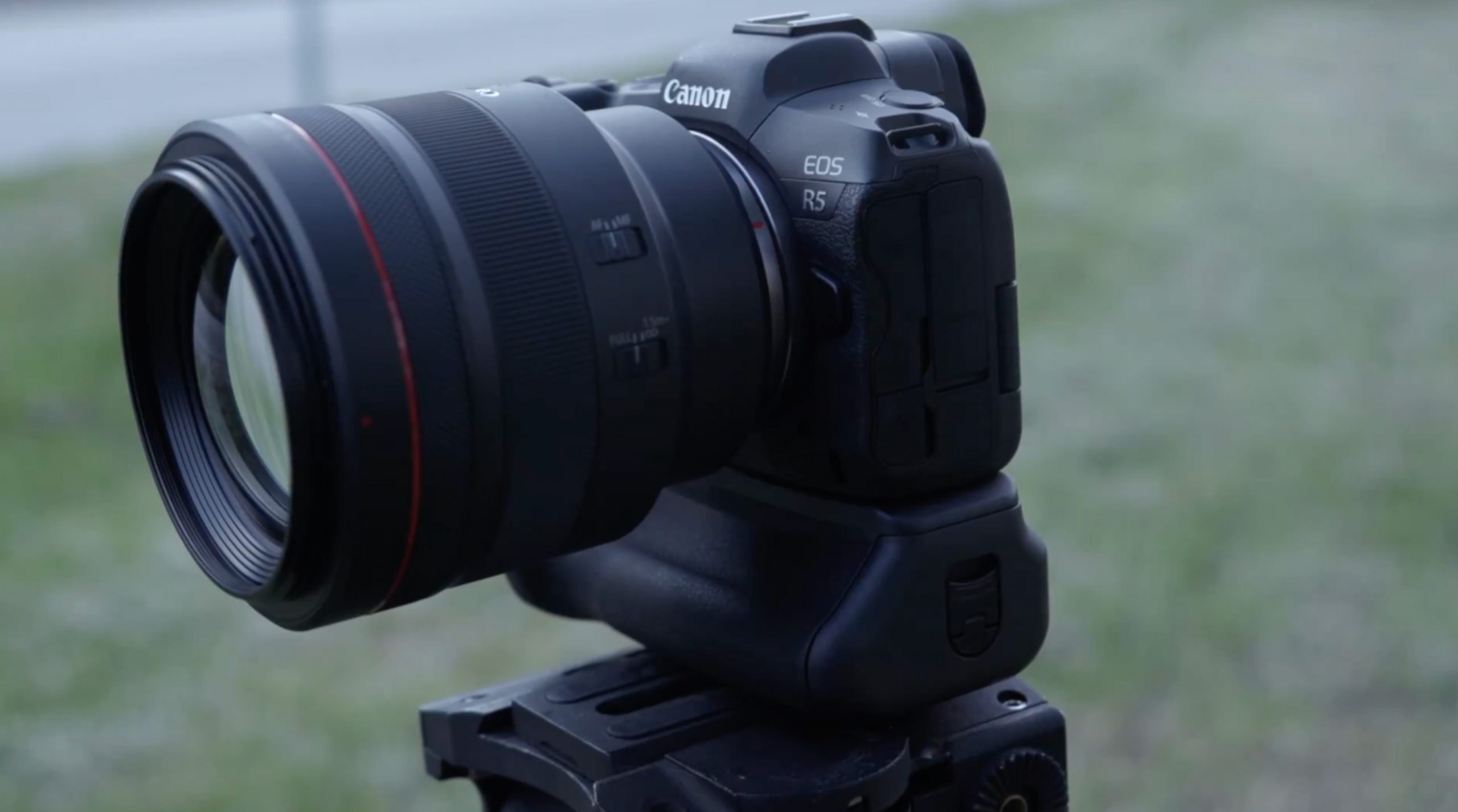
The Canon EOS R5 works in mysterious ways.
Canon chose to implement 8K and 4K/120p on this camera knowing that heat build-up will make for some short recording times. This was a risk, because the perceived hit to reliability can generate a lot of bad publicity. What was Canon thinking and what else does the camera offer for when more reliable recording is needed?
There are 3 main video modes on the EOS R5. Full pixel readout (8K), 4K from the 8K readout and 4K from a pixel binned sensor readout. These roughly break down* as follows in the camera menus:
- 8K RAW and ALL-I / IPB up to 30p
- 4K HQ from 8K sensor readout up to 30p
- 4K pixel binned mode up to 30p
- 4K / 60p – also pixel binned
- 4K / 120p – also pixel binned
* Literally!
All the above modes are usable in 10bit, with C-LOG 1. There’s no C-LOG 2 or 3.
The 8K sensor mode (up to 30p) obviously creates a lot of heat and has potential for some severe rolling shutter (around 32ms).
The 4K HQ mode (up to 30p) is oversampled from the same sensor mode as above and comes with the two drawbacks above.
The high frame rate 4K 60p and 120p modes are not from the 8K sensor readout.
In order to achieve the higher frame rates, the sensor uses 2×2 binning, similar to the 4K video mode on the 60 megapixel Sony a7R IV.
The 4K 30p non-HQ mode is read from the sensor in the same way.
Since this has a much lower frame rate, there’s less heat and less work for the image processor. Thus the 4K 30p (and 24/25p) pixel binned non-HQ mode does not have a thermal cut off.
This mode will go for longer than 30 minutes (although it isn’t yet clear if models imported into the UK and Europe avoid the 29m59s cut off for import duty tax savings. I believe this law has been recently changed).
So in a nutshell here is how one should go about using the EOS R5:
- If you need to reduce rolling shutter and want the most reliable performance with no heat-issues – select the non-HQ 4K modes at 30p, 25 or 24p.
- If you want to improve image quality in 4K, but are happy to have the camera stop working in the middle of a shoot (potentially) – choose 4K HQ mode.
- If you need RAW, you have to select 8K. There is no 4K RAW mode unfortunately. 8K has a 20 minute thermal cut off on average.
- The 4K/60p and 4K/120p will always be subject to “thermal throttling” – the camera cannot sustain this speed for long periods and will cut off after 15 minutes in 120p and 30 minutes in 60p.
EOSHD Opinion
There are two schools of thought on the EOS R5 overheating controversy and both are correct in their own way. Canon could have played it safe and not offered 8K, 4K from 8K or 4K/120p at all. They could have kept to just the lower-power 4K modes, pixel binned from the 45 megapixel sensor in the same way the Leica SL2 and Sony A7R IV produce their 4K images. Instead, Canon felt the advantages of advertising the EOS R5 with 8K and 4K/120p outweighed the disadvantages in terms of reliability and practicality.
The other school of thought is that Canon should improve their technology so that it’s possible to do high quality 4K and 8K in a small mirrorless camera without overheating problems. The Sigma Fp has a much smaller body than the EOS R5 and manages to do internal 4K RAW recording and output 12bit 4K RAW sensor data to a USB C SSD or external recorder. This is quite some efficient sensor and processor design, especially when you consider it runs from a small Panasonic GH2 battery. It isn’t power hungry and it doesn’t get too hot. There’s also an innovative thermal design going on with the Fp, and Canon seem not to have done the same with the EOS R5.
I understand the criticism of this blog made by some Canon fans – for so long I’ve been criticising Canon for not implementing exciting video features. Now finally they have and I am still complaining. The difficult position I am in is that I couldn’t stay silent about serious limitations and let big name websites or YouTubers hype the camera while underplaying the negatives. This would have been a disservice to those who will pay a lot of money – upwards of £4000 minimum – for a camera system that is key to their professional lives. Going uninformed into such a big purchase, only to find out that it stops recording during a shoot with lost take after lost shot, is not the kind of service either EOSHD or Canon should be offering filmmakers.






